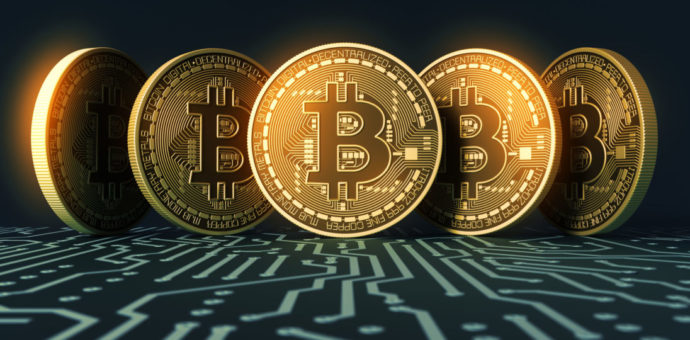Today we started a series of material aimed at the public that still does not have much information about bitcoin. For this, we will have the help of our friends from Cripto Economía, a Spanish educational initiative on cryptocurrencies and blockchain.
And in our first article, we will go back to the beginning: what is bitcoin?
In a simple and straightforward way, bitcoin is the first decentralized digital currency. Like money, bitcoin is a value representation. For example, if someone does a job for someone else, they get money, which represents the value of that work. With this money, you can exchange for something of similar value, and so on.
Throughout history, several different materials have served as a representation of value, in addition to paper money. Salt, wheat, sea shells and gold were some of them. What is common to all of them is that their value was based on trust. That is, to really have value, it was necessary to trust that they were really valuable. And that would remain long enough to regain this value in the future.
That has changed in the last 150 years. Since then, we have come to trust someone: the banks. We explained: formerly gold was used, for example, as a means of exchange. But because of the nuisance of walking with gold bars, an idea to represent the value of gold appears, paper money. So whoever held a certain amount of gold had the option of depositing it in the banks and receiving in return a certificate that he had deposited that gold value in the institution.
If people today are hard to understand this new form of money called bitcoin, imagine how it was when using the paper money. So, today we are exactly at that moment, in the paradigm shift of value representation.
However, the bond of the paper note with the deposited gold was completely broken by the 1970s. Today governments themselves are responsible for maintaining the value of paper money. Thus, this system continues to function because of people’s trust in governments.
Power in the bank’s hands
Despite the great convenience, fiat money has two drawbacks in general. First, centralization. That is, there is a central authority that controls and issues it. In this case, the central banks. Second, not limited in quantity. Thus, central banks can issue as much as they like and inflate the money supply in the market, causing inflation. In other words, each ballot becomes worthless because prices rise.
However, nowadays we use mostly digital money. Whether by credit cards, bank transfers, online payment systems, etc. To get an idea of the world’s money supply, only 18% is physical money. And it is the banks, centrally, that define who the money represented digitally.
The problem with this is that these institutions have enormous power in their hands. And this creates problems with a number of problems linked to corruption, mismanagement of public money and lack of citizen control of money – for example, a government can seize its checking account.
The solution
Bitcoin came up just to solve those problems. Satoshi Nakamoto’s white paper published in 2008 proposed just one way to solve the inconveniences of traditional money, digital or physical. That is, it created a digital currency free of the possibility of double spending and independent of a central monetary authority. Therefore, we call it a decentralized solution, just like the internet itself.
So, what is bitcoin?
In essence, it is a totally transparent and decentralized accounting book, which works similarly to the internet. Today, banks manage their accounting books, containing all bank balances and transactions. However, no one has access to these books. Bitcoin, on the other hand, is a totally transparent accounting book where anyone can view all balances and transactions. The only thing you can not see is who you belong to.
In addition, this book is totally decentralized, that is, it does not have an owner, it isn’t managed by a company. That is all the computers that participate in the system keep a copy of the ledger, which is what we know as the blockchain. So if any hacker wants to attack the system, he will have to attack thousands of computers that have the copy of that book. There is no single point of vulnerability.
Benefits
Bitcoin has no geographical boundaries. Therefore, if a country’s economy is adversely affected, bitcoin will not be affected. In addition, no government or authority can confiscate money or impose a limit of expenditure nor prevent it from the use. And yet you will not pay excessive fees like those paid to banks today to make international transactions, for example.
Bitcoin, therefore, can be likened to the internet of money. A few years ago, in order to gain access to information, it was necessary to rely on a few specific media outlets. Today, with the Internet, information is disseminated and available to anyone who wants to consume it.
Finally, bitcoin gives people access to a complete and decentralized banking system. Nowadays, of the 7 billion inhabitants of the planet, only 1 billion have access to a complete banking system. With a simple smartphone capable of sending SMS – that is – without having to access the internet, anyone can use bitcoins as a means of value exchange.







